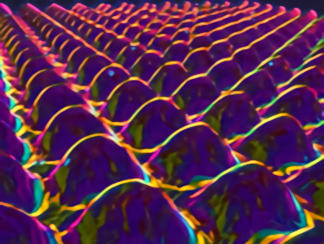Intro To Psi And Computation

This post was previously hosted on the legacy site and later Blogspot in November 2016. There are some edits for clarity. Note that the psi of the title is still only speculatively related to the macro psi that humans have been recording in their experience for millenia. If we do in fact stabilize systems for quantum computation utilizing multiple methods and succeed in showing that quantum advantage can be achieved via more than one path we’ll be closer to having the tools we need to identify macro signatures “in the wild” . It will still be a nontrivial challenge. The idea that nature computes in the large and small is not accepted by everyone. Notions of computation in context here have to include biology and to be clear we are not invoking any kind of mechanistic or strictly materialist view on nature at all.
Introduction
The burden of proof for any unknown or anomalous physical phenomenology is usually met via record of observation. Whether or not there exists a strong theoretical foundation in place for guiding experimental probing is largely dependent upon the temporal development of technologies available for testing increasingly sophisticated ideas that build on what came before. We are at a rather unique crossroads for testing psi phenomena in that technology has made posing questions regarding esp , precognition and the like undifferentiable from problems in areas involving computation, engineering , physics and in my own particular neck of these woods prediction , analysis and signal processing. That is to say that these “problems” resemble many other things that constitute fundamental research in areas like quantum computation as well.
I am not a physicist. My own work involves analytic methods for signal detection in data when signals are poorly characterized and/or swamped by noise . In many cases this has required knowing the physics of the processes involved – the physics of the problem may be very well characterized but the means of data collection may be less than optimal or complicated by the presence of lots of noise in the form of things like…dust.
As a starting point I’d like to point out that once you accept the evidence for psi the consideration of models to test becomes paramount. The standard model of physics that represents our most up to date knowledge from the infinitesimal measure of the Planck length on up to cosmological scales is a fairly accommodating structure. The important thing is that we start somewhere that gives us the opportunity to avoid silly things like violating physical laws of energy conservation ,information and causality at the outset.
It’s easier to do that now than it was prior to contemporary theoretical work that encompasses multiple paths for putting quantum physics and relativity on the same page. Early on there were brilliant minds accelerating the development of the science with brilliant mathematics but at the time theories would produce lots of things that seemed nonsensical. Those particular solutions to the equations were ignored for a time as ‘nonphysical’ solutions or bothersome artifacts. In due course evidence for the reality of things like antimatter2, black holes3 and associated gravitational waves4 would drive theorists into some very strange waters. But even they wouldn’t have seen strings and M-Theory coming. Proper branes were conspicuous in their absence.
So where does all this leave us ? Does the standard model5 Universe have what it takes to produce macro psi ? Obviously yes if you accept the evidence for macro psi . But that needs to be narrowed. Can purely classical physics give us everything we need or do we require relativistic frames and quantized fields to explain psi ? This is where things get really interesting. In one framework we have observations that describe causal anomalies . In another we have…engineering challenges !
In this sense throwing down the gauntlet requires a map. Our statement here merely serves notice of intent. Don’t feel frustrated if you find it interesting but want more background. There will be plenty of citation and annotation , links and media as we go. If your feeling the impulse to jump in with objections already feel free to do so but remember – this is the cover and not the book. The book is still being written.
With the discontinuation of military based research in areas of psi that were useful to intelligence gathering high level and ongoing technical discussions involving these phenomena are few and far between. Hopefully in the future we’ll have other researchers putting in a word or two regarding their own work and where they think things might be going.
References
1. This is a short list of peer-reviewed journal articles and books about psi phenomena. It includes articles of historical interest, general overviews, critical reviews, and descriptions of psi applications. These articles appeared in specialty journals as well as top-tier outlets, including Nature, Science, The Lancet, Proceedings of the IEEE, Psychological Bulletin, Foundations of Physics, Frontiers in Human Neuroscience, and Behavioral and Brain Sciences. Thanks Dean Radin and associates
2. CERN note on Paul Dirac and antimatter , a timeline
3. A Brief History Of Black Holes original article by Jeremy Scnittman via astronomy.com
4. MIT News press release February 11 2016 on 1st Direct Detection of Gravitational Waves
5. The Institute Of Physics short page on the Standard Model
